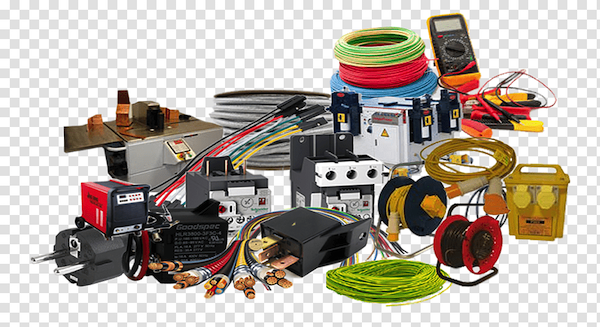The electric products market in the USA has seen dynamic shifts in pricing over the past few years, influenced by technological advancements, global supply chain disruptions, inflation, government policies, and evolving consumer demand. From home appliances and personal gadgets to electric vehicles (EVs) and industrial equipment, understanding the price trends of electric products is crucial for both consumers and businesses.
This article provides a comprehensive look at electric product prices across various categories in the United States, factors affecting those prices, and what buyers can expect in the current and near-future marketplace.
1. Overview of the Electric Product Market in the USA
The electric product market encompasses a wide range of items:
- Consumer electronics: Smartphones, laptops, TVs, tablets, smartwatches, etc.
- Home appliances: Refrigerators, air conditioners, washing machines, ovens, microwaves.
- Personal care appliances: Electric toothbrushes, hair dryers, trimmers.
- Electric vehicles (EVs): Cars, scooters, bikes, and charging equipment.
- Industrial electrical equipment: Power tools, generators, solar inverters, etc.
According to Statista and U.S. Census Bureau data, consumer electronics revenue in the USA exceeded $150 billion in 2024 and is projected to grow steadily due to the expansion of smart home technology and increased interest in sustainability and electrification.
2. Average Prices of Key Electric Products in 2025
Here is a breakdown of current average prices across different categories as of mid-2025:
a) Consumer Electronics
| Product | Average Price (USD) |
|---|---|
| Smartphone (Mid-tier) | $600 – $800 |
| Smartphone (Flagship) | $1,000 – $1,500 |
| Laptop (Student Use) | $400 – $700 |
| Laptop (High-End) | $1,200 – $2,500 |
| Smart TVs (55″-65″) | $400 – $1,200 |
| Smartwatch | $150 – $500 |
| Wireless Headphones | $100 – $400 |
b) Home Appliances
| Appliance | Average Price (USD) |
|---|---|
| Refrigerator | $1,000 – $2,500 |
| Washing Machine | $500 – $1,200 |
| Clothes Dryer | $400 – $1,000 |
| Microwave Oven | $100 – $300 |
| Electric Oven/Stove | $700 – $2,000 |
| Dishwasher | $400 – $1,200 |
| Smart Thermostat (e.g., Nest, Ecobee) | $150 – $300 |
c) Electric Vehicles (EVs)
| Vehicle Type | Average Price (USD) |
|---|---|
| Electric Sedan | $35,000 – $55,000 |
| Electric SUV | $50,000 – $80,000 |
| Electric Pickup Truck | $60,000 – $90,000 |
| E-Bike | $1,000 – $3,500 |
| Home Charging Station | $500 – $2,000 |
3. Factors Influencing Prices
a) Supply Chain Costs
The COVID-19 pandemic, ongoing geopolitical tensions, and chip shortages have caused ripple effects on pricing. While some supply chains have normalized in 2024–2025, others, like rare earth minerals used in batteries and chips, still see price volatility.
b) Technological Advancements
New innovations typically increase early adopter pricing. For example, AI-integrated devices and OLED/QLED screens are more expensive, but prices drop as the technology becomes mainstream.
c) Inflation and Labor Costs
Inflation has driven up production and logistics costs. Rising labor wages in the U.S. and overseas markets like China and Vietnam—where many components are assembled—also contribute to final product pricing.
d) Sustainability and Tax Incentives
Eco-friendly and energy-efficient electric products often come with higher initial costs, but rebates and government tax incentives (e.g., for EVs or ENERGY STAR appliances) can reduce the effective price.
4. Recent Pricing Trends
- Smartphones: While flagship models remain expensive, mid-range phones offer excellent performance, increasing competition in the $400–$700 segment.
- TVs and Monitors: Prices have declined due to overproduction and competition from brands like TCL, Hisense, and Vizio.
- EVs: Tesla, Rivian, Ford, and others have recently lowered prices due to federal tax credits and competitive pressure. The average cost of an EV dropped by 8% in early 2025.
- Energy-efficient appliances: Increased demand for eco-friendly products has slightly pushed up prices, though savings from utility bills and rebates offer value in the long term.
5. Online vs. Offline Pricing
- Online Stores (Amazon, Best Buy, Walmart.com): Often offer lower prices due to fewer overhead costs and frequent promotional campaigns.
- Brick-and-Mortar Retail: Offers hands-on experience, but may have slightly higher prices.
- Subscription Models: Some companies now offer products via monthly leasing or installment plans, making expensive items more accessible.
6. Tips for Smart Buyers
- Time Your Purchases: Big discounts are common during events like Black Friday, Cyber Monday, and Back-to-School season.
- Use Price Trackers: Tools like CamelCamelCamel, Honey, and Keepa help track price drops on major retail platforms.
- Rebates and Incentives: Check for rebates on ENERGY STAR products or EV tax credits on IRS and state government websites.
- Buy Refurbished: Certified refurbished electronics can offer excellent value with warranties.
- Avoid Hype: New releases often carry a premium. Waiting a few months can save hundreds.
7. The Future Outlook
Electric products in the U.S. are expected to:
- Become more affordable over time due to technological scaling and competition.
- See more integration with AI and IoT, increasing demand for smart home ecosystems.
- Expand in EV and renewable energy equipment, as sustainability becomes a national priority.
Conclusion
Electric product prices in the USA reflect a mix of innovation, market competition, global economics, and shifting consumer priorities. Whether you’re looking for a new smartphone, a sustainable EV, or upgrading your home with smart appliances, understanding these trends can help you make informed and budget-friendly decisions.



